Kenneth L. Gentry Jr.'s Blog, page 27
April 21, 2023
JEWISH CONFUSION REGARDING THE MESSIAH
PMW 2023-032 by Kenneth L. Gentry, Jr.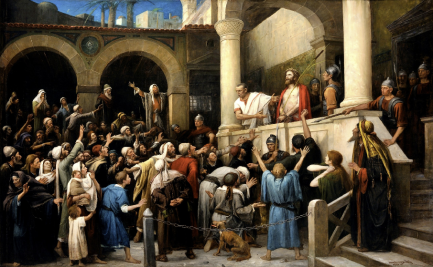
In response to a previous article I wrote on the Olivet Discourse, a reader challenged my interpretation of the division in the Discourse. He believes the Lord does not move to consider his second coming and final judgment until Matt. 25:31. He challenged me largely because he felt that the view I present (a division in the Discourse at Matt. 24:34–36) does not actually deal with the disciples’ question in Matt. 24:3. They expected the destruction of the temple would signal “the end of the age,” which my reader assumes is the end of the old covenant era, and therefore of the temple era in AD 70.
The Two-age Structure of Redemptive History
I am currently researching a book on the two-age structure of redemptive history. My view is that which is taught by most Reformed (e.g., B. B. Warfield, Geerhardus Vos, Richard Gaffin, Greg Bahnsen) and many orthodox evangelical (e.g., George E. Ladd, Grant Osborne, R. T. France, D. A. Caron) scholars. There is clear and compelling evidence that the two-age structure of redemptive history is not speaking of the old covenant versus the new covenant.
Rather, the two-age structure, which is presented most clearly by Jesus (Matt. 12:32; Mark 10:30; Luke 20:34–35) and Paul (Gal. 1:4; Eph. 1:21), counterpoises “this age” over against “the coming age.” That is, they set temporal history (history since the fall and until the Second Coming of Christ) over against the consummate order (which will be established at the Second Coming and Final Judgment at the end of history). This is why Paul speaks of a first Adam and a last Adam. He is dealing with fallen historical order under Adam vs. the perfected consummate order under Christ. He is not dealing with the first Moses and the second Moses.
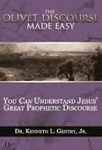
Olivet Discourse Made Easy (by Ken Gentry)
Verse-by-verse analysis of Christ’s teaching on Jerusalem’s destruction in Matt 24. Shows the great tribulation is past, having occurred in AD 70, and is distinct from the Second Advent at the end of history.
See more study materials at: www.KennethGentry.com
The Jewish Confusion over Christ’s Ministry
In the Olivet Discourse Jesus answers his disciples’ question while simultaneously correcting their misunderstanding. He does this by warning them that he is not to be sought back on earth when the temple is destroyed (Matt. 24:23–26), for his coming at the end of the age will be like lightning (24:27), which no one could miss. Thus, regarding the destruction of the temple, he gives them many signs (e.g., Matt. 24:4–7, 15–20) of the event which he knows for certain will come in “this generation” (24:34). But in the second part of his Discourse (24:37–25:46), he distinguishes his future Second Coming/Final Judgment of “that day.” He does this by noting (surprisingly!) that he himself does not know when it will occur (Matt. 24:36) and that there will be no signs of it — so that people will be caught off guard (e.g., 24:39, 42, 44, 50; 25:13).
Not understanding the two-age structure of redemptive history and prophetic revelation, has enormous consequences. In fact, it led the first-century Jews to reject their Messiah in that they assumed when he came, he would deliver them from the Romans. They rejected him because he did not meet up to their conquering-Messiah expectations (e.g., John 6:15).
The militaristic conquering-Messiah expected by the Jews was the type of person which Pilate was concerned about. Thus, Pilate asked Jesus: “Are you the King of the Jews?” (John 18:33). But Jesus disavowed any militaristic kingdom-action: “My kingdom is not of this world. If My kingdom were of this world then My servants would be fighting so that I would not be handed over to the Jews; but as it is, My kingdom is not of this realm” (John 18:26). So, once he heard this, Pilate declared him innocent and offered to free him: “I find no guilt in Him. But you have a custom that I release someone for you at the Passover; do you wish then that I release for you the King of the Jews? (John 18:39). In response to this offer, “they cried out again, saying, ‘Not this Man, but Barabbas’” (John 18:40).
This widespread confusion among first-Jews, explains why Jesus kept quiet on his being the Messiah through most of his ministry. For instance, in Matt. 16:20, after Peter’s Great Confession of Jesus as “the Christ, the Son of the living God” (Matt. 16:16), we read: “Then He warned the disciples that they should tell no one that He was the Christ” (Matt. 16:20).
Thine Is the Kingdom
(ed. by Ken Gentry)
Contributors lay the scriptural foundation for a biblically-based, hope-filled postmillennial eschatology, while showing what it means to be postmillennial in the real world.
See more study materials at: www.KennethGentry.com
This also explains John the Baptist’s confusion, when he was thrown into prison for declaring the coming of the Messianic kingdom. In Matt. 11:2–3 we read: “Now when John, while imprisoned, heard of the works of Christ, he sent word by his disciples and said to Him, ‘Are You the Expected One, or shall we look for someone else?’” He had preached of fiery judgment by the Messiah (Matt. 3:12), but Jesus was not bringing such about. In fact, as his forerunner John was now in prison about to be capitally punished.
This also explains why the Emmaus Road disciples were so disheartened: They spoke of “Jesus the Nazarene, who was a prophet mighty in deed and word in the sight of God and all the people” and yet “the chief priests and our rulers delivered Him to the sentence of death, and crucified Him. But we were hoping that it was He who was going to redeem Israel” (Luke 24:19–21). Jesus had not lived up to the apocalyptic expectations, and now he had even been killed.
Yet the Old Testament prophecies speak of Christ’s coming in two stages: first to suffer and die; then to come in mighty power conquering his enemies. By misconstruing the two-age revelation, the Jews rejected Christ and Jesus’ followers were greatly disheartened and confused.
THE TWO AGES AND OLIVET (advertisement)
I am currently researching a study of the Two-Age structure of redemptive history. My starting point is based on the disciples’ questions to Jesus in Matthew 24:3. Much confusion reigns among those unacquainted with the Two-Age analysis of history, which was promoted by Jesus (Matt. 12:32; Mark 10:29-30) and by Paul (Gal. 1:4; Eph. 1:21). The Two Ages are not the old covenant and the new covenant, but world history since the fall and the consummate order following the Second Coming and the Final Judgment.
If you would like to support me in my research, I invite you to consider giving a tax-deductible contribution to my research and writing ministry: GoodBirth Ministries. Your help is much appreciated!
April 18, 2023
REVELATION’S SEVEN ORACLES (3)
 PMW 2023-031 by Kenneth L. Gentry, Jr.
PMW 2023-031 by Kenneth L. Gentry, Jr.
This is the final installment in a three-part study of seven “letters” to the seven churches in Revelation. I have been arguing that they are not really letters at all. Rather they are judgment oracles. This fits perfectly with the preterist understanding of Rev as a covenant lawsuit against Israel. In the previous article I offered the first two arguments for the oracular nature of these seven messages. In this article I will complete my argument by presenting my final three points.
Third, the oracles are a part of the crucial, introductory vision of the Son of Man and even flesh out this visionary unit that extends from 1:9 all the way through to 3:22. The oracles are not separate, free-standing material. Unfortunately, this is obscured by the modern chapter divisions imposed upon the text. But we can see the unified nature of this larger section from several lines of evidence:
(1) The initial portion of the vision of the Son of Man ends with a statement regarding the seven churches (1:20). Then it immediately begins presenting oracles to those very churches: “to the angel of the church in Ephesus write” (2:1a). This by itself should compel us to recognize this material as a related unit.
(2) The Son of Man in the vision is repeatedly declared to be the very one who is charging John to write (1:11, 12, 17, 19; cp. 1:3): this continuing charge is carefully repeated in introducing each of the seven oracles (2:1a, 8a, 12a, 18a; 3:1a, 7a, 14a). Thus, John is evidently still in the presence of the visionary Son of Man and continues to hear him speaking (which speaking began in 1:12) in the authoritative oracles: “the One who . . . says” (2:1b; cp. 2:8b, 12b, 18b; 3:1b, 7b, 14b).
The Early Date of Revelation and the End Times: An Amillennial Partial Preterist Perspective
By Robert Hillegonds
This book presents a strong, contemporary case in support of the early dating of Revelation. He builds on Before Jerusalem Fell and brings additional arguments to bear.
See more study materials at: www.KennethGentry.com
(3) The descriptions of the Son of Man in the vision (1:12–20) are repeatedly brought into the oracles to underscore the fact that he is the one who continues to speak. For instance, in 2:2 he is presents himself as “the One who holds the seven stars” which reflects the vision of 1:20. In 2:8b he calls himself “the first and the last” which is based on 1:17c. And so on (see more on this below).
(4) John provides no internal break, no textual clue to suggest that he has left his visionary experience (1:10). That is, we do not hear such transitional statements as “after these things” (4:1; 7:9; 15:5; 18:1; 19:1). Interestingly though, the actual name “Jesus” or “Christ” is never given in the oracles, though it appears in 1:1, 2, 5, 9; 11:15; 12:10, 17; 14:12; 19:10; 20:4, 6; 22:16, 20, 21)
Thus, regarding the importance of the seven oracles, we must recognize that they are a part of the all-important, opening vision of the risen, death-conquering Christ who will dominate the entire story of Rev. They are therefore important as introductions to the judgment/salvation visions to follow. All of this “is very important” in that by recounting “this vision as he does at the beginning of the work” he “established, in the customary fashion of Judaeo-Christian rhetoric, his ēthos as a prophet — the trustworthiness of character that Aristotle identified as perhaps the most effective source of rhetorical proof” (John Kirby).
Fourth, as historically-focused oracles they anchor Rev in the first century, which we should expect in light of John’s near-term indicators (1:1, 3; 22:6, 10). John opens his book with a vision of the Son of Man (1:12–22) among those particular churches (1:4, 11, cp. 2:1, 8, 12, 18; 3:1, 7, 14), then immediately applies this vision to the real circumstances of his original audience. The preterist approach sees these messages as providing strong evidence for its understanding of the overall point of Rev.
Fifth, the presence of the oracles as microcosms of John’s larger story is also helpful for our understanding a very practical matter: the relationship of the seven churches to the drama therein. After all, the redemptive-historical preterist sees the main focus of Rev to be on Israel’s AD 70 judgment (1:7). If John is writing to Asia Minor churches about the approaching fall of Jerusalem over 450 miles across the Mediterranean Sea to the southeast how is Rev important for its original recipients? I would point out the following.
 The Beast of Revelation (246pp); Before Jerusalem Fell: Dating the Book of Revelation (409pp); Navigating the Book of Revelation: Special Studies on Important Issues (211pp).
The Beast of Revelation (246pp); Before Jerusalem Fell: Dating the Book of Revelation (409pp); Navigating the Book of Revelation: Special Studies on Important Issues (211pp).
In the Logos edition, these volumes by Ken Gentry are enhanced by amazing functionality. Important terms link to dictionaries, encyclopedias, and a wealth of other resources in your digital library. Perform powerful searches to find exactly what you’re looking for. Take the discussion with you using tablet and mobile apps. With Logos Bible Software, the most efficient and comprehensive research tools are in one place, so you get the most out of your study.
For more study materials, go to: KennethGentry.com
John writes to the seven churches of Asia but through them to all the churches: note that the Son of Man “holds the seven stars” in his hand (2:1), each of the oracles speaks to “the churches” (2:7, 11, 17, 29; 3:6, 13, 22), and at one place we specifically hear that “all the churches” are to learn from the experience of one (2:23). Thus, “these seven churches have been singled out to complete the sublime number that figures so prominently in the symbolism of the book, and thus to epitomize the first-century church as a whole” (Kirby). The smaller story of the seven churches plays out on the larger canvas of the judgments closing out the old covenant in the fall of Jerusalem and the permanent collapse of the Jewish temple as a redemptive-historical act in establishing the new covenant. The larger story to unfold in Jerusalem is not irrelevant to the local churches far away in Asia Minor.
THE TWO AGES AND OLIVET (advertisement)
I am currently researching a study of the Two-Age structure of redemptive history. My starting point is based on the disciples’ questions to Jesus in Matthew 24:3. Much confusion reigns among those unacquainted with the Two-Age analysis of history, which was promoted by Jesus (Matt. 12:32; Mark 10:29-30) and by Paul (Gal. 1:4; Eph. 1:21). The Two Ages are not the old covenant and the new covenant, but world history since the fall and the consummate order following the Second Coming and the Final Judgment.
If you would like to support me in my research, I invite you to consider giving a tax-deductible contribution to my research and writing ministry: GoodBirth Ministries. Your help is much appreciated!
April 14, 2023
REVELATION’S SEVEN ORACLES (2)
 PMW 2023-030 by Kenneth L. Gentry, Jr.
PMW 2023-030 by Kenneth L. Gentry, Jr.
In the preceding article in this three-part series, I introduced the concept that the seven messages that appear early in Rev are not really letters. Rather they should be understood as prophetic oracles built on the covenant lawsuit model of the Old Testament. These seven oracles are important for several reasons. I will highlight two of those in this article, and the remaining ones in my next article.
First, a major reason John writes Rev is to encourage faithfulness through the storm of persecution befalling John’s original Christian recipients. Throughout Rev he urges perseverance through the coming trials (1:3, 9; 12:11; 13:10; 14:4–5; 16:16; 17:14; 21:7). For instance, John opens with: “I, John, your brother and fellow partaker in the tribulation and kingdom and perseverance which are in Jesus, was on the island called Patmos because of the word of God and the testimony of Jesus” (Rev 1:9). So at the very beginning of his book John declares that he and his recipients are “in the tribulation” and that they must also engage in “perseverance.” The several other verses I list above also testify to the urgent call to hold on through the storm.
This perseverance theme holds true in the oracles as well (2:2–3, 10, 17, 19, 25–26; 3:3, 5, 8, 10, 12, 21). In this distinct section (2:1–3:22). For instance, in the opening comments in the opening oracle, we read: “I know your deeds and your toil and perseverance, and that you cannot tolerate evil men, and you put to the test those who call themselves apostles, and they are not, and you found them to be false; 3 and you have perseverance and have endured for My name’s sake, and have not grown weary” (Rev 2:2–3). Christ speaks directly to the churches regarding their own specific issues in their own historical contexts and calls them to overcome (2:7, 11, 17, 26; 3:5, 12, 21).
Four Views on the Book of Revelation
(ed. by Marvin Pate)
Helpful presentation of four approaches to Revelation. Ken Gentry writes the chapter on the preterist approach to Revelation, which provides a 50 page survey of Revelation .
See more study materials at: www.KennethGentry.com
In each oracle Christ states: “I know your x” (2:2, 9, 13, 19; 3:1, 8, 15). He also calls for spiritual faithfulness in each of the seven churches by using “an aphorism rooted in the Jesus tradition”: ho echōn ous akousatō (“he who has an ear”; 2:7, 11, 17, 29; 3:6, 13, 22). This call reflects that which Jesus issues to his listeners (Mt 11:15; 13:9, 43; Mk 4:9, 23; Lk 8:8; 14:35).
Second, the themes set forth in the oracles are developed in the dramatic visions to follow in Rev. John Kirby observes that “these serve more or less as ‘cover-letters’ for the rest of the work.” Consequently, as G. K. Beale notes, they serve as a “literary microcosm of the entire book’s macrocosmic structure.” James Barr agrees: “In this way, the story of the letters is really the story of the whole work.” Barr adds: “The letters to the seven churches are small rhetorical gems, not only perfectly balanced within themselves, but each correlated with the opening vision of the risen Christ. . . . They also contain all the basic themes of the work. . . . They are, in other words, a sort of miniature of the Apocalypse in prosaic style.” Or as Alan Bandy expresses it: “the impact of these messages cause ripples throughout the entire vision evident by the intratextual reverberations later in the book.”
We may see that the oracles anticipate the larger narrative of Rev in several respects. In addition to the
perseverance theme just stated, the later visions expand other oracle themes such as: overcoming (2:7, 11, 17, 26 = 12:11; 15:2; 17:14; 21:7), tribulation (2:9, 10 = 22; 7:14), Satan (2:9 = 13; 3:9; 12:9; 20:2, 7), martyrdom (2:13 = 6:9–11; 11:7–10; 14:13; 17:6), idolatry (2:14, 20 = 9:20; 13:4; 21:8; 22:15), sword judgment (2:16 = 6:4; 13:10; 19:15, 21), salvation blessing (2:7 = 22:2; 2:11 = 20:6; 21:8; 2:26b-27 = 20:4 ), and more.

Blessed Is He Who Reads: A Primer on the Book of Revelation
By Larry E. Ball
A basic survey of Revelation from the preterist perspective.
It sees John as focusing on the destruction of Jerusalem and the temple in AD 70.
For more Christian studies see: www.KennethGentry.com
This is especially significant in that Rev’s theme regards God’s imminent judgment against the Jews for their killing Christ (1:7), for in the oracles we also see Jewish opposition against the local churches (2:9; 3:9) and the divine judgment upon them that is approaching (3:10). Christ’s judgment-coming against Israel is also anticipated by his chastening-coming against the individual churches themselves (2:5, 16, 25; 3:3, 11). Significantly, “the conclusion of each message carries a theme that runs through Revelation — viz., God’s mercy and loving-kindness toward his own (cf. 7:15, 17; 19:7–9; 21:3–7). A conditional promise of salvation then follows after an exhortation to ‘listen’ (2:7, 11, 17, 29; 3:6, 12, 22)” (Robert Muse).
I will continue this study in my next and final article.
THE TWO AGES AND OLIVET (advertisement)
I am currently researching a study of the Two-Age structure of redemptive history. My starting point is based on the disciples’ questions to Jesus in Matthew 24:3. Much confusion reigns among those unacquainted with the Two-Age analysis of history, which was promoted by Jesus (Matt. 12:32; Mark 10:29-30) and by Paul (Gal. 1:4; Eph. 1:21). The Two Ages are not the old covenant and the new covenant, but world history since the fall and the consummate order following the Second Coming and the Final Judgment.
If you would like to support me in my research, I invite you to consider giving a tax-deductible contribution to my research and writing ministry: GoodBirth Ministries. Your help is much appreciated!
April 11, 2023
REVELATION’S SEVEN ORACLES (1)
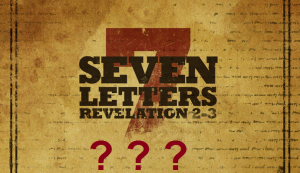 PMW 2023-029 by Kenneth L. Gentry, Jr.
PMW 2023-029 by Kenneth L. Gentry, Jr.
The literary genre of Revelation is one of the key issues in its proper interpretation. The question of genre even affects our understanding of the seven letters in Rev. 2 and 3. The “Seven Letters of Revelation” are a familiar and popular section of John’s Revelation. Unfortunately, these popularly-designated “letters” to the seven churches are not actually letters at all.
Rather the so-called Seven Letters are actually more adapted to Revelation’s overarching literary genre and judgment message. They are prophetic oracles or royal proclamations. And as such they perfectly fit in with the theme and flow of Revelation.
These seven messages do not appear to be epistles in that they “diverge from the normal models of Greco-Roman epistolary writing” (Alan Bandy). Each one begins with a command to write to a church rather than a salutation which is altogether lacking (even though Rev as a whole has a salutation, 1:4–5). Nor do they have appropriate conclusions which were “a standard part of all personal letters in antiquity” (R. L. Muse).
In addition, the opening of each “letter” immediately declares tade legei, “thus says,” or more literally “these things he says.” This is more in keeping with a prophetic oracle or royal proclamation. Clearly, these oracles are uniquely framed in the NT, differing from common epistolary forms.
In the OT the prophets occasionally send prophetic oracles by way of letter, but they are most decidedly oracles — oracles structured by the covenant lawsuit pattern. In Rev the seven oracles come from Christ who “is above all the Faithful Witness (1:5) whose legal testimony will be decisive when the heavenly tribunal examines the earthly covenant partners” (G. Campbell). The OT prophetic oracles open with “thus says” and are followed by a statement of who speaks (Yahweh). This is like the seven oracles in Rev beginning with tade legei (“thus says”) followed by a description of the authoritative speaker (usually the Son of Man, 1:13–20).

The Book of Revelation Made Easy
(by Ken Gentry)
Helpful introduction to Revelation presenting keys for interpreting. Also provides studies of basic issues in Revelation’s story-line.|
See more study materials at: www.KennethGentry.com
In this regard, we must consider the following OT examples: “Then a letter came to him from Elijah the prophet saying, ‘Thus says the LORD God of your father David’” (2Ch 21:12). “Now these are the words of the letter which Jeremiah the prophet sent. . . . ‘Thus says the LORD of hosts, the God of Israel’” (Jer 29:1, 4). “Zephaniah the priest read this letter to Jeremiah the prophet. Then came the word of the LORD to Jeremiah, saying” (Jer 29:29–30). We also see this form in the OT in a royal proclamation: “Thus says Cyrus king of Persia” (2Ch 36:23). Outside of Rev the only time this common prophetic phrase is used in the NT is in Ac 21:11b. There Agabus issues a prophetic pronouncement regarding Paul’s coming captivity: “This is what the Holy Spirit says [tade legei].”
The oracles generally present two fundamental messages. Both of these message types conform to the OT prophetic pattern. They are:
1. A warning message is presented to each of the churches, even to the two who are not rebuked: Smyrna (2:10) and Philadelphia (2:10–11).
2. A promise of salvation is given as the high point of each oracle (2:7b, 11b, 17b, 26–28; 3:4–5, 12, 21). These two message run throughout Rev’s narrative, with the salvation message being the goal of Rev.
Since Revelation is an apocalyptic prophecy detailing God’s covenant curse on Israel, the structure and significance of these seven messages as prophetic oracles is significant. Even if widely misunderstood. Stay tuned for Part 2.
Click on the following images for more information on these studies:
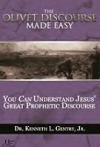

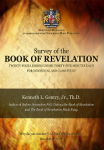
April 7, 2023
WHAT DOES “THE SON OF MAN” MEAN?
 PMW 2023-028 by Kenneth L. Gentry, Jr.
PMW 2023-028 by Kenneth L. Gentry, Jr.
During his earthly ministry, Jesus repeatedly refers to himself as “the son of man” (Matt. 8:20; 9:6; 10:23; 11:19; 12:8; etc.). But what does this self-designation mean? How is it used in the Gospels?
As we consider this phrase in the Gospels, we must keep three important issues in mind: (1) Jesus is the only one who ever uses this phrase. Never do his disciples, the Jews, or anyone else mention it. (2) The phrase is always used with the definite article: “the son of man” (3) In Matthew’s Gospel, Jesus himself does not even begin using it until Matt. 8:20. Each of these points is significant.
In the Gospels, we find four key predicative-expressions serving to identify who Jesus is: (1) “the son of David” (Matt. 12:23; 22:42); (2) “the Messiah” (Matt. 16:16, 20; 26:63); (3) “the Son of God” (Matt. 26:63; 27:43, 54); and (4) “the king of the Jews/Israel” (Matt. 27:11, 42). And these are often used by persons other than Jesus — even by God himself (Matt. 3:17; 17:5), Satan (Matt. 4:3, 6), and demons (Matt. 8:29).
The phrase “the son of man” is a technical term, but not a term of identification pointing out who Jesus really is. That is, we never find it mentioned as a predication, such as “he is (or is not) the son of man.” Despite modern popular opinion, it does not function as a christological title. And it is not a substitute for “Messiah.”
The Glory of Christ (book by R. C. Sproul)
From the angels’ revelation of Jesus’ glory to the shepherds outside Bethlehem,
to Jesus’ life-changing revelation of His glory to Paul on the Damascus road, Sproul guides us to a deeper understanding of Christ’s glory.
For more study materials: www.KennethGentry.com
Even though Jesus constantly speaks of himself as the “son of man” either to his disciples or in their presence, they never pick up on this phrase and refer to him as the “son of man.” They do not even do so in the very contexts where he has just declared himself to be the “son of man” (Matt. 8:18, 20; 10:5, 23; 12:1, 8; 13:36, 41). In fact, when he specifically asks his disciples who people say “the son of man” is (Matt. 16:13) and who the disciples themselves believe he is, Peter responds “You are the Christ, the son of the living God” (Matt. 16:15). He does not say “you are the son of man.”
And when the disciples declare Jesus’ identity, they do not call him “the son of man.” Rather, they use one of the other identifying phrases such as “the son of God” (Matt. 14:33) or “the Christ” (Matt. 16:16).
What is more, Jesus even warns his disciples not (yet!) to tell others that he is “the Christ” or “the Son of God” (Matt. 16:16, 20). [1] He never tells them not to tell anyone he is “the son of man.” Charges are brought against him for claiming he is “the son of God” (Matt. 26:63–65; 27:42), but not for claiming he is “the son of man.”
The reason “the son of man” does not occur before Matt. 8:20 is because in the first section of his Gospel (Matt. 1:1–4:16), Matthew is establishing Jesus’ identity as “the Son of God.” [2] The climax of this first section is God’s own declaration: “This is my beloved Son” (Matt. 3:17). Once that has been established, Matthew has Jesus beginning to call himself “the son of man.” And for an important reason.
Matthew is pressing home the point that Jesus is the son of God. But once he has established that all-important, foundational truth, then he shows that in his earthly ministry the Son of God has become . . . a man, a particular man, “the son of man.” And as a man (God in the flesh) he must suffer (Matt. 8:20; 17:9, 12; 26:24, 45). And as a man, he will judge all other men (Matt. 13:37–43; 25:31–46; cp. John 5:22, 27; Acts 10:42; 17:31). [3] And it is only as this man, “the son of man,” that Jesus as the God-man effects full redemption for sinners (Matt. 18:11; 20:28).

Keys to the Book of Revelation
(DVDs by Ken Gentry)
Provides the necessary keys for opening Revelation to a deeper and clearer understanding.
See more study materials at: www.KennethGentry.com
Thus, Jesus the Son of God has become flesh so that he might die on the cross. In Matt. 16:21 (where Matthew’s second section begins; see Note 2) Jesus begins making this point to his confused disciples (cp. Matt. 17:23; 20:18). Until his resurrection they do not fully understand that he must die as the “son of man” (Matt. 16:21–23; cp. John 20:9). Jesus’ redemptive work depends on his being “the son of man,” a particular, historical man.
And, again: this “son of man” will be the judge of all men — which will be the concluding point of the Olivet Discourse (Matt. 25:31–46).
THE TWO AGES AND OLIVET (advertisement)
I am currently researching a study of the Two-Age structure of redemptive history. My starting point is based on the disciples’ questions to Jesus in Matthew 24:3. Much confusion reigns among those unacquainted with the Two-Age analysis of history, which was promoted by Jesus (Matt. 12:32; Mark 10:29-30) and by Paul (Gal. 1:4; Eph. 1:21). The Two Ages are not the old covenant and the new covenant, but world history since the fall and the consummate order following the Second Coming and the Final Judgment.
If you would like to support me in my research, I invite you to consider giving a tax-deductible contribution to my research and writing ministry: GoodBirth Ministries. Your help is much appreciated!
Notes
1. This prohibition only continues until he has fully revealed his redemptive plan to them and they understand it. For in the Great Commission, they are commanded to God and baptize people in the name of Jesus as God’s Son. But this point must await another article!
2. Note the phrase marker is: “from that time Jesus began” (Matt. 4:17a and 16:21a). See my article “Matthew’s Outline; Jesus’ Identity.”
3. This point will be significant in my forthcoming commentary on Matt. 21–25. There I will show that all men need to be judged at the end of history (cf. Matt. 25:31–46) — not just Israel in AD 70.
April 4, 2023
AD 70 AND THE FINAL JUDGMENT
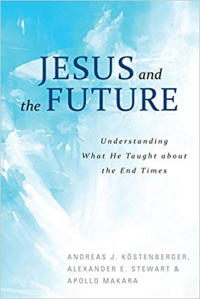 PMW 2023-027 by Kenneth L. Gentry, Jr.
PMW 2023-027 by Kenneth L. Gentry, Jr.
In this article I will offer a brief review of an important and helpful book on the eschatology of Jesus, Jesus and the Future. To paraphrase a well-known biblical proverb, we might say that “the writing of many books on prophecy is endless.” And too many of current prophecy books are downright useless, so that we must confess “that such is wearisome, for the eye is not satisfied with seeing charts and graphs, nor is the ear filled with hearing Antichrist and Rapture predictions.” But this is one of the rare prophecy books that is well worth reading.
Review of Jesus and the Future: Understanding What He Taught about the End Times, by Andreas J. Köstenberger, Alexander E. Stewart and Apollo Makara (Wooster, Ohio: Weaver, 2017). Paperback, 196 pp.
Köstenberger, Stewart, and Makara have written a helpful summary of Jesus’ eschatological teaching that is aimed at evangelical laymen in our confused times. They have designed this small work to “cut through the maze of end-time teaching” that has so befuddled contemporary evangelical thought (p. 17).
In that this work is intended for laymen, it avoids exegetical technicalities and scholarly jargon (pp. 17, 28), even while offering serious reflection and careful argumentation. It is an easy read that offers substantial analysis. And though studying “cold” biblical doctrine (eschatology), it frequently offers warm evangelical calls to faith (e.g., pp. 169, 175). Thus, it is both instructional and exhortational. The authors also offer occasional helpful excursuses on important biblical, theological, and historical matters (e.g., pp. 42, 53, 58, 75, 113).
 An Eschatology of Victory
An Eschatology of Victory
by J. Marcellus Kik
This book presents a strong, succinct case for both optimistic postmillennialism and for orthodox preterism. An early proponent in the late Twentieth-century revival of postmillennialism. One of the better non-technical studies of Matt. 24. It even includes a strong argument for a division between AD 70 and the Second Advent beginning at Matt. 24:36.
For more Christian educational materials: www.KennethGentry.com
Jesus and the Future focuses primarily on the Synoptic Gospels, which have more of Jesus’ prophetic teaching than John’s Gospel. Yet, it does offer one chapter on John. By the very nature of the case, the bulk of the discussion focuses on the Lord’s “Eschatological Discourse” — the Olivet Discourse, which is given three chapters of analysis. This is important in that this is Jesus’ most extensive teaching on the subject, and at the same time one of his most debated discourses. Significantly, Olivet does not appear in John’s Gospel.
The work is fully orthodox. The authors hold firmly to the deity of Christ, the full inspiration and inerrancy of Scripture, a future, literal Second Coming, a future, bodily resurrection of the dead, the Final Judgment, and eternal hell, to name a few of the doctrines that become evident. Contrary to the most popular works on prophecy, the authors are very much opposed to dispensationalism (e.g., pp. 17, 27, 62, 74n, 79, 85, 146, 171, 173).
In addition, the work is also quite conservative. It holds that John the Apostle wrote the Gospel associated with his name (p. 156n) and that Paul wrote all of the “Pauline epistles,” despite critical opinion. The book even holds to an early date for the Synoptics prior to AD 70 (e.g., p. 36) — though a late date for John’s Gospel (e.g., p. 158). It also appears to assume the priority of Matthew, over against widespread critical and evangelical commitment to Marcan priority (p. 32).
The important theological concept of the Already/Not Yet principle of kingdom inauguration is presented in the book (e.g., pp. 78, 127, 133, 154, 161). This principle is essential for sorting through some of the thorny issues in eschatology. And despite most so-called “prophecy experts” (i.e., televangelists, Hyper-preterists, and other Bible-thumpers) the authors recognize that it is sometime difficult to separate AD 70 statements from Second Advent statements (e.g., pp. 27, 38, 53, 128). Thus, they simply do not treat Scripture as if it were a mere box of Tinker Toys to be played with.
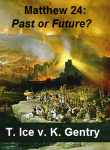
Matthew 24 Debate: Past or Future?
(DVD by Ken Gentry and Thomas Ice)
Two hour public debate between Ken Gentry and Thomas Ice on the Olivet Discourse.
See more study materials at: www.KennethGentry.com
Consequently, one often-stated position is well-summarized in the following statement: “we’ve seen that Matthew, Mark, and Luke reveal that, regarding the near future, Jesus prophesied that there would be (1) persecution of his followers and (2) a judgment of ‘this generation’ with special attention on the Jewish religious leadership for their rejection of him. Regarding the more distant future, we’ve seen that Jesus taught that (3) the Son of Man will come with power; (4) and there will be a future resurrection and final judgment followed by eternal reward and punishment” (p. 154; cp. p. 170). I whole-heartedly concur with this.
The authors offer an insightful analysis of the Olivet Discourse, recognizing that it begins with prophecies regarding the destruction of the temple in the first century, then turns to focus on the Final Judgment at the end of history’s last century. Consequently, they properly recognize that AD 70 is a pointer to the Final Judgment. I whole-heartedly concur with this.
A distinctive of this work is its offering an interesting structure for the Olivet Discourse. This structure rightly separates the Lord’s AD 70 statements from his Final Judgment comments. This is where so many “prophecy experts” stumble. Köstenberger et al. argue that “there are good reasons to think that Jesus transitioned [from the disciples’ first question, which deals with AD 70] to the second question (included only in Matthew’s Gospel) about his coming and the end of the age” (p. 63). I whole-heartedly concur with this.
They argue that, especially in Luke’s version, “the destruction of Jerusalem is separated from this cosmic upheaval by an indefinite period, the time of the Gentiles (the past two thousand years, and counting)” (p. 63). But in Matthew, they see the transition from AD 70 to the Final Judgment in Matthew’s version of Olivet as occurring in Matt. 24:23–28. They hold that because of the universal implications of verses 29–31 (cp. Mark 13:24–27; Luke 21:25–28), these verses cannot be applied to AD 70. Thus, they offer a tidy division between the two prophetic foci, unlike many exegetes who deem Matthew 24 as a mishmash that is so inscrutable we can hardly unscrew it.
Despite their careful argument for a separation of AD 70 from the Final Judgment in the Olivet Discourse, their particular presentation fails to convince me. I follow the more detailed exegesis of R. T. France in this regard, which recognizes Matt. 24:34–36 as the transition passage. I feel that the authors of Jesus and the Future too hastily dismiss France (pp. 63–69). (Of course, France’s commentary on Matthew is much larger and more detailed and Köstenberger’s is designed for laymen and avoids technical details.)
What is remarkable about this failure is that their argument against Matt. 24:29 applying to AD 70 is that they themselves recognize that such language can be metaphorical and applied to historical events: “This interpretation is possible and makes good sense,” though they conclude that “the fact that an interpretation is possible does not necessarily make it probable” (p. 65; cp. p. 68). Indeed, they confess that “these responses by themselves aren’t sufficient to disprove the interpretation offered by N. T. Wright and R. T. France” (p. 69).
Since Jesus and the Future its topically arranged around Jesus’ eschatological teaching, it is necessarily repetitious. However, if we are to fully understand Jesus’ eschatological teaching, studying the distinctive angles of each of the Gospels is important.
One disappointment I have with the book is that it lacks an index. This problem is partly resolved, however, by its offering a “Contents in Full” after its Table of Contents, which they call “Contents in Brief.”
I highly recommend this sane treatment of Jesus’ eschatological teaching, even though I cannot agree with one of its key arguments regarding the proper place to divide the Olivet Discourse. The book, nevertheless, has much to offer laymen in our time. And I am glad to see competent scholars recognizing that Olivet speaks to both AD 70 and the Final Judgment without engaging in mishmashic arguments like many of the rabbinical midrashic arguments of old.
The book may be ordered from Weaver Book.
THE TWO AGES AND OLIVET (advertisement)
I am currently researching a study of the Two-Age structure of redemptive history. My starting point is based on the disciples’ questions to Jesus in Matthew 24:3. Much confusion reigns among those unacquainted with the Two-Age analysis of history, which was promoted by Jesus (Matt. 12:32; Mark 10:29-30) and by Paul (Gal. 1:4; Eph. 1:21). The Two Ages are not the old covenant and the new covenant, but world history since the fall and the consummate order following the Second Coming and the Final Judgment.
If you would like to support me in my research, I invite you to consider giving a tax-deductible contribution to my research and writing ministry: GoodBirth Ministries. Your help is much appreciated!
March 31, 2023
THE NEW CREATION TWO-STEP
 PMW 2023-026 by Kenneth L. Gentry, Jr.
PMW 2023-026 by Kenneth L. Gentry, Jr.
Christianity affirms the material order. In creation God made the physical world (Gen. 1) and man with a tangible body (Gen. 2:7). In redemption God effects the incarnation of Christ (Heb. 2:14) and his physical resurrection (Luke 24:39). We should not be surprised, then, that even in the consummation we will once again inhabit physical bodies (John 5:28-29) in a material environment (2 Peter 3:13). God has created us as men, not angels. As redeemed vessels of mercy we will inherit a glorious, perfect, physical realm when God refashions the world in the new heavens and new earth.
We find the fullest explanation of the glory of the consummate new creation in Revelation 21-22. But we cannot simply leap to the closing chapters of the Bible and expect to understand it properly. Revelation is the capstone of prophecy, not the foundation stone. Without adequate preparation for interpreting it, it can become a stumbling stone.
New Creation Anticipation
We must first recognize the biblical principle of gradualism: God generally works his will gradualistically over time rather than catastrophically all at once. We see this in Israel’s incremental conquest of the Promised Land (Exo. 23:29-30; Deut. 7:22), in God’s unfolding of his revelation in history (Isa. 28:10; Heb. 1:1-2), in the progress of redemption in time (Gen. 3:15; Gal. 4:4), and in the expansion of Christ’s kingdom to the end (Mark 4:26-32; Isa. 9:6-7).
This principle of gradualism gives rise to the “now but not yet” principle in eschatology. For instance, our Lord established his kingdom in the first century. Not only did he declare “the time is fulfilled, and the kingdom of God is at hand” (Mark 1:15) but he stated quite clearly that “if it is by the Spirit of God that I cast out demons, then the kingdom of God has come upon you” (Matt. 12:28). Yet he also taught us to pray: “Your kingdom come” (Matt. 6:10). So then, the kingdom is present, yet it also is to come; it is now, but not yet.
[image error]For more information and to order click here.
" data-image-caption="" data-medium-file="https://postmillennialismtoday.files...." data-large-file="https://postmillennialismtoday.files...." class="alignright size-full wp-image-209" src="https://postmillennialismtoday.files...." alt="Navigating the Book of Revelation: Special Studies on Important Issues" >Navigating the Book of Revelation (by Ken Gentry)
Technical studies on key issues in Revelation, including the seven-sealed scroll, the cast out temple, Jewish persecution of Christianity, the Babylonian Harlot, and more.
See more study materials at: www.KennethGentry.com
The same is true of our own resurrection. Christ teaches us about a spiritual resurrection that is present (“now”) and which is directly linked to a physical resurrection to come (“not yet”): “Truly, truly, I say to you, an hour is coming, and is now here, when the dead will hear the voice of the Son of God, and those who hear will live. . . . Do not marvel at this, for an hour is coming when all who are in the tombs will hear his voice and come out, those who have done good to the resurrection of life, and those who have done evil to the resurrection of judgment” (John 5:25, 28-29).
We also see this principle at work in Christ’s subduing his enemies, which is one sense accomplished now (1 Peter 3:22) but in its ultimate sense is not yet (Heb. 10:13).
In the same way, God unfolds the new creation in stages. The new creation is now with us for: “if anyone is in Christ, he is a new creation. The old has passed away; behold, the new has come” (2 Cor. 5:17). Yet we are awaiting its final, corporeal establishment: “But according to his promise we are waiting for new heavens and a new earth in which righteousness dwells” (2 Peter 3:13).
Isaiah prophesied the church age using dramatic new creation language:
“For behold, I create new heavens
and a new earth,
and the former things shall not be remembered
or come into mind” (Isa. 65:17).
This clearly was not speaking directly of the consummate, eternal order, for it still experiences birth, death, and sin at work (Isa. 65:20).
Thus, in the kingdom established by Christ in the first century we find the new creation order in spiritual form, anticipating its objective climax at the end of history. Consequently, the new heavens and new earth presently exist within the bosom of the church. Just as Scripture links the present spiritual and future physical resurrections, so also it links the present spiritual and the future physical new creation. Therefore, we can learn what the consummated order will be like by reflecting on the present spiritual realities already at work, realities which anticipate the perfected consummate order.
New Creation Consummation
We must carefully establish these principles before engaging seeking to understand the nature of the consummate order for an important reason: Most of what we know from God’s word about the eternal order is by extension from the present order.

Blessed Is He Who Reads: A Primer on the Book of Revelation
By Larry E. Ball
A basic survey of Revelation from the preterist perspective.
It sees John as focusing on the destruction of Jerusalem and the temple in AD 70.
For more Christian studies see: www.KennethGentry.com
We indirectly discover the fullest insights from God regarding the final new heavens and new earth in Revelation 21 and 22. This passage opens with words clearly drawn from Isaiah’s prophecy regarding the new covenant kingdom-church: “Then I saw a new heaven and a new earth, for the first heaven and the first earth had passed away, and the sea was no more” (Rev. 21:1; cp. Isa. 65:17). We know that John is here speaking directly of the present order established in principle in Christianity because he concludes this vision noting: “And he said to me, ‘These words are trustworthy and true. And the Lord, the God of the spirits of the prophets, has sent his angel to show his servants what must soon take place . . . .’ And he said to me, ‘Do not seal up the words of the prophecy of this book, for the time is near’” (Rev. 22:6, 10). It was near to him nineteen hundred years ago.
Speaking directly of the eternal order to come after a long time (2 Peter 3:3-9), Peter points to the radical transformation of the present world that God will effect at Christ’s return: “the heavens will pass away with a roar, and the heavenly bodies will be burned up and dissolved, and the earth and the works that are done on it will be exposed. . . . The heavens will be set on fire and dissolved, and the heavenly bodies will melt as they burn! But according to his promise we are waiting for new heavens and a new earth in which righteousness dwells” (2 Peter 3:10-13).
The ideal realities that Revelation 21 and 22 portray in principle in Christianity may easily be extrapolated to and objectified in the consummate order — for that is the ultimate source from which he draws anyway (cp. Heb. 8:5; 9:24). We can now survey these characteristics in Revelation 21 and 22 directly applying them to our final state. Obviously human words and images strain to express our eternal condition, but they do provide glorious hints of its majesty.
In the consummate new creation, the present fallen order passes away (21:1, 5) as the heavenly pattern comes down out of heaven from God to mold the material new earth (21:2, 10b). Absolute peace prevails as all discord vanishes, for there is no raging sea, which is an image of tumult and discord (21:1b; cp. Isa. 57:20). This provides final resolution to our longstanding prayer: “Your kingdom come, your will be done on earth as it is in heaven” (Matt. 6:10). Indeed, evil men are altogether banished (21:27; 22:23) so that “the gates of the city” never need closing (21:25). We will be fully and forever in the accepting presence of God and of Christ (21:3; 21:22-23; 22:3-4), living as Adam before the Fall (Gen. 3:8a).
In this glorious estate sorrow and death no longer exist (21:4; 22:3a) for God nourishes and sustains us with perfect and abundant life (21:6; 22:1-3). As resurrected, corporeal creatures we are finally, fully, and forever adopted as the sons of God, receiving our promised eternal inheritance (21:7; cp. Rom. 8:18-25). Our physical environment will be dazzling in glory and unimaginable in grandeur (21:11, 18-21), being bathed by the very glory of God (21:23; 22:5). Our estate will enjoy the absolute stability (“foundations”) and security (“walls”) of God’s protection (21:12-17), where we are safe and secure from all alarms. Our eternal habitation will be abundant in scope and size (21:16), including vast multitudes (21:24-26; cp. Rev. 7:9).
THE TWO AGES AND OLIVET
I am currently researching a study of the Two-Age structure of redemptive history. My starting point is based on the disciples’ questions to Jesus in Matthew 24:3. Much confusion reigns among those unacquainted over the Two-Age analysis of history that was promoted by Jesus and by Paul. The Two Ages are not the old covenant and the new covenant, but world history since the fall and the consummate order following the Second Coming and the Final Judgment.
If you would like to support me in my research, I invite you to consider giving a tax-deductible contribution to my research and writing ministry: GoodBirth Ministries. Your help is much appreciated!
With universal harmony and righteousness existing in the new earth, the redeemed will engage in cultural pursuits, just as God intended for Adam (Gen. 1:28; 2:15, 19). These collaborative pursuits will include even national distinctives: “By its light will the nations walk, and the kings of the earth will bring their glory into it . . . . They will bring into it the glory and the honor of the nations. But nothing unclean will ever enter it” (22:24, 26-27). That we will be organized as “nations” involving “kings” indicates that cultural variety and governmental endeavors continue. These, of course, will be without sin, for we will “walk by its light” and bring in “nothing unclean.”
And the bringing in of our “glory” strongly suggests that the earthly knowledge we gain in our present temporal labors will be useful and actually employed to the glory of God in the new world (as also suggested in the Parable of the Talents, Matt. 25:13-30). Indeed, John’s vision is based on Isa. 60:11:
“Your gates shall be open continually;
day and night they shall not be shut,
that people may bring to you the wealth of the nations,
with their kings led in procession.”
The earthly cultural wealth (experiences, skills, knowledge) of the nations will neither be dismissed nor forgotten, but employed in the eternal world — for “their deeds follow them” (Rev. 14:13).
God intentionally created us as physical beings with bodies adapted to a material environment, beginning with the creation of unfallen Adam. At the last day we will be bodily raised from the dead (John 5:28-29; 1 Cor. 15:12-25). In our eternal estate we will inhabit a purified, refashioned earth — something of a new Eden (Rev. 2:7; 22:2), but with no prospect of failure (as was inherent in Eden, Gen. 2:17). Truly, “Thine is the kingdom, and the power, and the glory, forever” (Matt. 6:13 NASB). And just as surely we have presently received the Holy Spirit “as a pledge of our inheritance, with a view to the redemption of God’s own possession, to the praise of His glory” (Eph. 1:14).

March 28, 2023
THE IMPOSSIBILITY OF POSTMILLENNIALISM?
 PMW 2023-025 by Kenneth L. Gentry, Jr.
PMW 2023-025 by Kenneth L. Gentry, Jr.
Our Lord Jesus Christ ministered for over three years proclaiming the coming of the kingdom of God. But after initially drawing a “great multitude” of followers (Jn 6:2), John records with disappointment that “many of His disciples went back and walked with Him no more” (Jn 6:66). In fact, toward the end of his ministry one of his own twelve disciples turned against him, literally selling him out to the authorities (Jn 13:18; Ac 1:18-19). And even his remaining faithful disciples forsook him in cowardly fear as he was on trial for his life (Mt 26:31, 56; Lk 22:31-34), locking themselves away from opponents (Jn 20:19).
With such a shaky start, what might we expect to become of the kingdom of God, which Christ initially proclaimed as near (Mk 1:15; Mt 4:17) and eventually established as present (Mt 12:28; Lk 17:20-21)? In other words, what is the outlook for the Christian faith in the historical long run? How should we answer a query such as Christ poses: “When the Son of Man comes, will he really find faith on the earth” (Lk 18:8)?
The Prophetic Hope for the Mission
Though surprising to many evangelicals today, the appropriate answer to such a question is a resounding, “Yes!” Such a rhetorical, motivational challenge fully expects a positive response. Despite the modern church’s gloomy pessimism regarding her future on earth, the Scripture paints a bright prospect for Christianity’s gradual historical advance (Is 9:7; Ez 17:22-24; 47:1-9; Mt 13:31-33; Mk 4:1-9, 26-29; 1Co 15:25-26) and glorious global conquest (Ps 22:27-31; Is 9:6-7; Mic 4:1-3; Jo 12:31-32; 1Co 15:20-25). And this before the Return of Christ – – because he presently rules from the right of God Almighty (Ac 2:33-35; Ep 1:20-22; Heb 10:12-13; 1Pe 3:22; cp. Ac 5:31; 7:55-56; Ro 8:34; 1Co 15:25-27; Co 3:1; Heb 12:2). After all, did not Christ himself unambiguously declare: “God did not send His Son into the world to condemn the world, but that the world through Him might be saved” (Jn 3:17)? Did he not promise: “And I, if I am lifted up from the earth, will draw all peoples to Myself” (Jo 12:32). How could he affirm such things if the future of the human race was destined to ever-deepening descent into chaos and despair, as most modern evangelicals suppose?
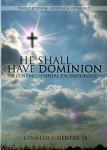
He Shall Have Dominion
(paperback by Kenneth Gentry)
A classic, thorough explanation and defense of postmillennialism (600+ pages). Complete with several chapters answering specific objections.
See more study materials at: www.KennethGentry.com
Many avenues in Scripture lead to a majestic earthly destination for mankind before the Lord’s Return: Do we not read of Jehovah giving Christ “the nations for Your inheritance” (Ps 2:8)? Of Christ’s ruling from “sea to sea; and from the river to the ends of the earth” (Ps 72:8)? Of “all nations” streaming into “the house of the Lord” during (not: “after”) the “last days” (Is 2:2)? Of the knowledge of the Lord covering the earth “as the waters cover the sea” (Is 11: 9)? Of the kingdom of heaven growing to dominance like the mustard seed (Mt 13:31-32)? Of the “reconciling of the world” to God (Ro 11:15; 2Co 5:19)?
But how can this be? Hasn’t the Fall ruined all earthly hope? Not according to Scripture! In fact, the Resurrection of the Second Adam (Christ) is more powerful than the Fall of the First Adam – – for it overturns the Fall’s catastrophic results. Let us see how this is so.
The Divine Directives for the Mission
According to Scripture we may expect the gradually developing, worldwide dominance of the Christian faith in time and on earth. We may because: It is God’s revealed will in Christ. One of the easiest ways to gauge the biblical warrant for a glorious earthly future is to examine the familiar Great Commission (Mt 28:18-20). This Commission is truly great, not only in terms of its power and task but, as we shall see, its goal.
The Time of the Commission. The chronology of the Great Commission is important for appreciating its dramatic significance. Christ proclaims the Commission after his Resurrection, that is, after he conquers sin, death, and the devil (Co 2:14-15; 1Co 15:20-25; Heb 2:14-15; 1 Jo 3:8). Hence, he proclaims in the aorist tense (point action in past time): “All authority has been given to Me” (Mt 28:18). This harkens back to God’s recent grant of authority to Christ at his Resurrection (Ac 2:32-35; Eph 1:20-21; Phil 2:8-11). Previously, Jesus humbly confessed: “the Son can do nothing of Himself” (Jn 5:19, 30; 8:28). Now he speaks authoritatively, as he steps out of his state of humiliation and into his glorious exaltation.
The Authority of the Commission. The opening words of the Commission triumphantly declare his universal authority. To those few followers who remain with him (Mt 28:16), Jesus boldly announces: “All authority has been given to Me in heaven and on earth” (Mt 28:18). And this despite his recent cruel and shameful treatment, resulting in his ignoble death. Despite the cowardice of his followers, the core members of his kingdom. Despite the might of Rome and the resistance of Israel, the political and religious contexts of his labors. Christ here truly speaks as the “King of kings and Lord of lords” (Rv 17:14; 19:16).

Greatness of the Great Commission (by Ken Gentry)
An insightful analysis of the full implications of the great commission. Impacts postmillennialism as well as the whole Christian worldview.
See more study materials at: www.KennethGentry.com
Our Lord’s claim of “all authority in heaven and on earth” is distributive. That is, he exercises authority in every realm: personal, familial, and ecclesiastical, as well as social, cultural, educational, legal, political, and any other area of human endeavor. This is the ultimate foundation for the bold task and its glorious expectation. Christ has universal authority to command and compel.
But what task does the Lord entrust to his servants? What goal does he set before them? What is our mission as Christians in this sinful, fallen world?
The Goal of the Commission. We quickly learn the expected outcome of the Commission, the anticipated goal of our calling in the world. The Lord commissions his people to nothing short of world conquest by means of the gospel of his saving love and sanctifying grace: “Go therefore and make disciples of all the nations, baptizing them in the name of the Father and of the Son and of the Holy Spirit, teaching them to observe all things that I have commanded you” (Mt 28:19-20a).
We must note that our Lord Jesus Christ, clothed with “all authority,” commands his followers to “make disciples of all the nations.” He does not send us to pluck individual brands here and there from the fire (though we must preach the gospel to individuals). Nor does he leave us in the world merely to “be witnesses” against all opposition (though we certainly must witness all along the way to our goal). Rather he commissions us actually to bring “all the nations” of the world under his discipleship. And this process of subduing the nations comes “not with swords loud clashing, nor roll of stirring drums,” but with spirit-blessed gospel preaching and faithful biblical instruction, for the “the gospel is the power of God unto salvation” (Ro 1:16; 1Co 1:18; 2Co 6:7; 1Th 1:5).
The Commission proceeds to its goal, therefore, through the power of Spirit induced conversion: we are to disciple and to baptize all nations of the world. Baptism is the sign and seal of entry into the kingdom of God (Acts 8:12); we baptize disciples “into” (Gk: eis) the name of the Father, Son, and Holy Spirit (Mt 28:19). Baptism is administered in the context of humble worship, not oppressive war.
The baptizing and discipling of men and nations results in ethical living according to the pattern of Scripture. Consequently, Christ commissions us to teach “them [i.e., all the baptized nations of the world] to observe all things that I have commanded you.” Conversion is the foundational starting-point for Christian discipleship, not the end-all. We must teach converts to live according to the authoritative instruction of him who is Lord.
Thus, the Great Commission directs us to seek the conversion of all nations by the gospel, to baptize them in the name of the Triune God, and to disciple them according to all the teaching of Christ. Certainly this is a Great Commission.
The Assistance for the Commission. Our Great Commission is surely not a hopeless commission, an ideal goal never actually expected. After all, it is securely established on the basis of “all authority in heaven and on earth.” What can thwart such authority? Not only so, but Christ promises: “I am with you always, even to the end of the age” (Mt 28:20b). Who can resist his powerful presence?
We are assigned, then, this glorious task on the basis of universal authority and with the promise of assistance by the universal king. Indeed, the Lord’s Prayer engages us to pray for that which the Lord’s Commission charges us to do: Did he not teach us to pray: “Your kingdom come. Your will be done, on earth as it is in heaven” (Mt 6:10)? Are we to pray for that which is hopeless? Is the Great Commission really a “Mission: Impossible”?
 Your Hope in God’s World (Kenneth Gentry)
Your Hope in God’s World (Kenneth Gentry)
5 DVDs; 5 lectures
This series of lectures presents the theological and exegetical argument for the postmillennial hope in our fallen world. The last lecture answers the major practical, theological, and exegetical objections to postmillennialism. An excellent series for both introducing and refreshing one’s understanding of postmillennialism.
See more study materials at: www.KennethGentry.com
The Ultimate Fulfillment of the Mission
A proper analysis of the Great Commission helps us answer the rhetorical question: “When the Son of Man comes, will he really find faith on the earth”? Unless he has laid before us a hopeless task far beyond our capacity and really outside his own will, we must believe that when the Son of Man comes he will find faith on the earth. And not just scattered enclaves of faith, but in fact a world-wide faith towering above all others (Is 2:2; Ez 17:22; Mt 13:32).
This is why John sees Christ as the “propitiation for our sins, and not for ours only but also for the whole world” (1Jo 2:2). He looks proleptically down the corridors of time to a world ultimately overwhelmed with the saving love of Christ, a world-system (Gk., kosmos) operating on the basis of Christian principle founded on redemption.
Just as Christ’s Great Commission roots this world-conquering hope in his resurrection, so does Paul. He does so not only in Philippians 2:6-11 and Romans 11:11-15, but especially in 1 Corinthians 15:20-25: “But Christ has indeed been raised from the dead, the firstfruits of those who have fallen asleep. For since death came through a man, the resurrection of the dead comes also through a man. For as in Adam all die, so in Christ all will be made alive. But each in his own turn: Christ, the firstfruits; then, when he comes, those who belong to him. Then the end will come, when he hands over the kingdom to God the Father after he has destroyed all dominion, authority and power. For he must reign until he has put all his enemies under his feet” (NIV).
Christ will not return until “after he has destroyed all dominion, authority and power.” Indeed, he must continue to “reign until he has put all his enemies under his feet.” Ours is a “Mission: Possible.”
THE TWO AGES AND OLIVET
I am currently researching a study of the Two-Age structure of redemptive history. My starting point is based on the disciples’ questions to Jesus in Matthew 24:3. Much confusion reigns among those unacquainted over the Two-Age analysis of history that was promoted by Jesus and by Paul. The Two Ages are not the old covenant and the new covenant, but world history since the fall and the consummate order following the Second Coming and the Final Judgment.
If you would like to support me in my research, I invite you to consider giving a tax-deductible contribution to my research and writing ministry: GoodBirth Ministries. Your help is much appreciated!
March 24, 2023
WHY THE NUMBER 144,000?
PMW 2023-024 by Kenneth L. Gentry, Jr.
 Some readers of Revelation are perplexed as to why 12 squared times 1000 is significant to the original readers in the 144,000? What is at about that number that would lead the original readers to think, ‘Oh that’s a number signifying a perfect amount of Jewish converts?’”
Some readers of Revelation are perplexed as to why 12 squared times 1000 is significant to the original readers in the 144,000? What is at about that number that would lead the original readers to think, ‘Oh that’s a number signifying a perfect amount of Jewish converts?’”
1. The Nature of Revelation
In the first place, no one would suggest Revelation is an easy book whose images leap out at you. John himself is left wondering about things within it from time to time (Rev 7:13, 14; 17:6-7).
In fact, in his opening sentence he informs his readers that the book is symbolic. Symbolism obviouislyi requires some thought. His introductory sentence is: “The Revelation of Jesus Christ, which God gave Him to show to His bond-servants, the things which must soon take place; and He sent and communicated it by His angel to His bond-servant John.” The word “communicated” is esemanen which could be translated “sign-ified,” i.e., symbolized.
The Early Date of Revelation and the End Times: An Amillennial Partial Preterist Perspective
By Robert Hillegonds
This book presents a strong, contemporary case in support of the early dating of Revelation. He builds on Before Jerusalem Fell and brings additional arguments to bear.
See more study materials at: www.KennethGentry.com
2.The Fact of the Number
Secondly, whatever the answer to your question is, the mysterious number 144,000 must mean something. John does specifically mention it. In Revelation John often — but not always — informs us what the symbols mean.
In his very first vision (1:13–18), for instance, we might well imagine that the Son of Man is merely walking around a room with candlesticks in it, for John states: “I saw seven golden lampstands; and in the middle of the lampstands I saw one like a son of man” (1:12–13). But John tells us very clearly that this image speaks of Christ’s presence among the seven churches. “The mystery of the seven stars which you saw in My right hand, and the seven golden lampstands: The seven stars are the angels of the seven churches, and the seven lampstands which you saw are the seven churches” (1:20).
In Rev 17 an interpretive angel informs John that the seven heads of the beast do not really picture a grotesque polycephalic creature. Rather we read: “Here is the mind which has wisdom: The seven heads are seven mountains on which the woman sits. There are also seven kings” (17:9–10a).
Other samples appear elsewhere: the seven lamps are the “seven Spirits of God” (4:5); the seven eyes of the Lamb are “the seven Spirits of God” (5:6); the incense bowls are “the prayers of the saints” (5:8; 8:3–4); the dragon is “Satan’ (12:9); the “tabernacle” represents “those who dwell in heaven” (13:6); the frogs from the mouth of the dragon, beast, and false prophet are “unclean spirits” (16:13–14); the ten horns on the beast are “ten kings” (17:12); the waters of the harlot are “peoples and multitudes” (17:15); the fine linen is “the righteous acts of the saints” (19:8).
3. The Error in the Question
Finally, you are looking at the number wrongly, I believe. The number 144,000 does not stand alone, but derives from other expressly mentioned numbers in the context. John specifically lists 12 tribes, so we have the number 12 directly given to us by the historic fact of the 12 tribes of Israel.
But then the 144,000 results from the fact that each of the 12 tribes is multiplied by 1000. Hence, we have 12,000 from each of the 12 tribe times, which gives us the 144,000. So 12 is not randomly squared. Thus, the question ultimately is: Why is the number 1000 significant?
The number 1000 derives from 10 cubed. In Scripture 10 represents quantitative perfection — apparently based on the number of fingers on a man’s hand. Regarding the number ten in antiquity, its significance “no doubt derives from simple calculations on the fingers” (ISBE2 3:560). The Jewish Philosopher Philo speaks of “the perfect number ten” (Spec. 2:11 §41).
Therefore 10 speaks of completeness — as we see in there being ten commandments (Ex 34:28), ten plagues (Ex 7:8–11:10), a tithe (Ge 14:20; Nu 18:21), ten righteous men would have saved Sodom (Ge 18:32), Jesus’ parable of the ten virgins (Mt 25:1), and so forth (cp 12:3; 13:1; 17:3, 7, 12, 16).
And the cube of 10 does not appear out of the blue in Revelation — in fact the color blue is not found in Revelation :). We find the number 1000 used throughout Scripture as designating completeness. Scripture often uses the value of 1000 symbolically.
Keys to the Book of Revelation
(DVDs by Ken Gentry)
Provides the necessary keys for opening Revelation to a deeper and clearer understanding.
See more study materials at: www.KennethGentry.com
For instance, God shows his mercy to a 1000 generations (Ex 20:6) — which suggests the perfect fullness of his grace (10 x 10 x 10). The Lord promises to make Israel a 1000 times more numerous than they are in Moses’ day (Dt 1:11) — bringing them to numerical fullness as a people. The Lord even claims the cattle on 1000 hills (Ps 50:10) — showing that he owns all the cattle of the earth. None of these statements should be interpreted literally.
Thus, the figure of 1000 more often than not expresses complete fullness, not an exact numerical accounting of 999 + 1.
So then, the 144,000 represents the fullness of Israel as found in the new covenant Church.
THE TWO AGES AND OLIVET
I am currently researching a study of the Two-Age structure of redemptive history. My starting point is based on the disciples’ questions to Jesus in Matthew 24:3. Much confusion reigns among those unacquainted over the Two-Age analysis of history that was promoted by Jesus and by Paul. The Two Ages are not the old covenant and the new covenant, but world history since the fall and the consummate order following the Second Coming and the Final Judgment.
If you would like to support me in my research, I invite you to consider giving a tax-deductible contribution to my research and writing ministry: GoodBirth Ministries. Your help is much appreciated!
March 21, 2023
REVELATION’S SEVEN SPIRITS
 PMW 2023-023 by Kenneth L. Gentry, Jr.
PMW 2023-023 by Kenneth L. Gentry, Jr.
A significant issue debated by Revelation scholars revolves around the “seven spirits” first mentioned in Rev. 1:4 (see also Rev. 3:1; 4:5; and 5:6). That initial text (with a portion of its context) reads:
John to the seven churches that are in Asia: Grace to you and peace, from Him who is and who was and who is to come, and from the seven Spirits who are before His throne, and from Jesus Christ, the faithful witness, the firstborn of the dead, and the ruler of the kings of the earth. (Rev. 1:4–5)
Despite the debate, the evidence strongly suggests that John is speaking of the Holy Spirit when he mentions the seven spirits. Here is some of the evidence.
(1) This identity fits with the context that is presenting the Father (1:4c) and the Son (1:5).
(2) It would be strange to put angels here before Christ himself since he is the dominant character in the drama and the angels are his subordinates.
(3) It would be odd for John to omit the Holy Spirit here when he speaks of him frequently elsewhere in Rev (1:10; 2:7, 11, 29; 3:1, 6, 13, 22; 4:2; 14:13; 17:3; 21:10; 22:17). The fact that he does not directly call him “the Spirit” or that he actually pluralizes his singular person (“seven spirits”) does not counter this observation. After all, John uses a variety of images for both God and Christ; and his apocalyptic imagery can allow for a symbolic, pluralized image-form.
(4) The benediction of grace and peace flows equally “from” each of these three persons: apo / apo / apo (1:4–5). This expects a divine source rather than a mixed source such as from God, the divine Christ, and created angelic beings.
The Beast of Revelation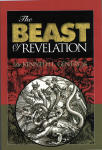
by Ken Gentry
A popularly written antidote to dispensational sensationalism and newspaper exegesis. Convincing biblical and historical evidence showing that the Beast was the Roman Emperor Nero Caesar, the first civil persecutor of the Church. The second half of the book shows Revelation’s date of writing, proving its composition as prior to the Fall of Jerusalem in A.D. 70. A thought-provoking treatment of a fascinating and confusing topic.
For more study materials, go to: KennethGentry.com
(5) The context employs a pattern of threes which would most naturally expect the paralleling of the divine Spirit with the divine Father and Christ. The benediction comes from three (apo / apo / apo, 1:4–5); the Father has a three-fold title (is / was / coming, 1:4); Christ’s identity is presented in a three-fold manner (witness, first-born, ruler, 1:5); and John gives a three-fold benediction rooted in Christ’s work (to him who loves / released / made us, 1:5–6).
(6) Rev expressly rejects any adoration of angels (19:10; 22:8). To elevate angels as a source of grace and peace clashes with this tendency.
(7) In the NT the source of grace and peace — the source of benedictory blessings — is always divine. By way of example, see the Pauline and Petrine benedictions listed above.
(8) The Holy Spirit is the characteristic identification of pneuma in the NT when found in conjunction with or as part of an apparent formula with God and Christ.
THE TWO AGES AND OLIVET
I am currently researching a study of the Two-Age structure of redemptive history. My starting point is based on the disciples’ questions to Jesus in Matthew 24:3. Much confusion reigns among those unacquainted over the Two-Age analysis of history that was promoted by Jesus and by Paul. The Two Ages are not the old covenant and the new covenant, but world history since the fall and the consummate order following the Second Coming and the Final Judgment.
If you would like to support me in my research, I invite you to consider giving a tax-deductible contribution to my research and writing ministry: GoodBirth Ministries. Your help is much appreciated!
(9) Rev’s three parallel appearances of this designation all point to the Holy Spirit. In 3:1 an image of Christ drawn from the vision at 1:16 appears where he “has [exōn] the seven Spirits of God” (also in 5:6 the Lamb’s “seven eyes . . . are the seven Spirits of God”). John’s Gospel emphasizes Christ’s receiving the Spirit (Jn 1:33), giving the Spirit (Jn 3:34; 20:22), and baptizing with the Spirit (Jn 1:32). Christ is the one who asks the Father to give the Spirit (Jn 16:5–7) so that “when the Helper comes, whom I will send to you from the Father, that is the Spirit of truth” (Jn 15:26; cp. Jn 7:39). He graciously imparts the Spirit to his apostles to lead them into all the truth (Jn 16:13; 20:22; cp. Rev. 1:10; 4:2; 17:3; 21:10). The indwelling of the Spirit is the coming of Christ within (Jn 14:17–18; cp. Ro 8:9; Gal 4:6). In 4:5 and 5:6 the seven spirits echo Zec 4.
In Rev 4:5 the seven spirits of God are called “seven lamps” which reflect Zechariah’s seven lamps (Zec 4:2). In 5:6 the “seven Spirits of God, sent out into all the earth” are associated with the “seven eyes” of the Lamb which allude to Zec 4:10 where “the eyes of the Lord . . . range to and fro throughout the earth.” And in Zec 4 all of this speaks of the work of “My spirit” (Zec 4:6). Zechariah 4 also impacts a later vision in Rev 11:4. Thus, John appears to be associating the seven spirits with Zechariah’s imagery and the work of the Holy Spirit. Furthermore, also back of John’s image appears to be the seven-fold spirit of Christ from Isa 11:2 (LXX) which mentions the “stem of Jesse” (Isa 11:1) which parallels John’s “the Root of David” (5:5).
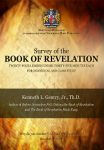
Survey of the Book of Revelation
(DVDs by Ken Gentry)
Twenty-four careful, down-to-earth lectures provide a basic introduction to and survey of the entire Book of Revelation. Professionally produced lectures of 30-35 minutes length.
See more study materials at: www.KennethGentry.com
(10) The following context comports well with the seven-fold spirit. That is, the first vision of Christ (1:12–20) presents him walking among the seven lampstands, which represents the seven churches of Asia (1:20). The seven-fold Spirit would provide the oil in the seven lamps thereby showing the Spirit works through their witness to the world.

Kenneth L. Gentry Jr.'s Blog
- Kenneth L. Gentry Jr.'s profile
- 85 followers



